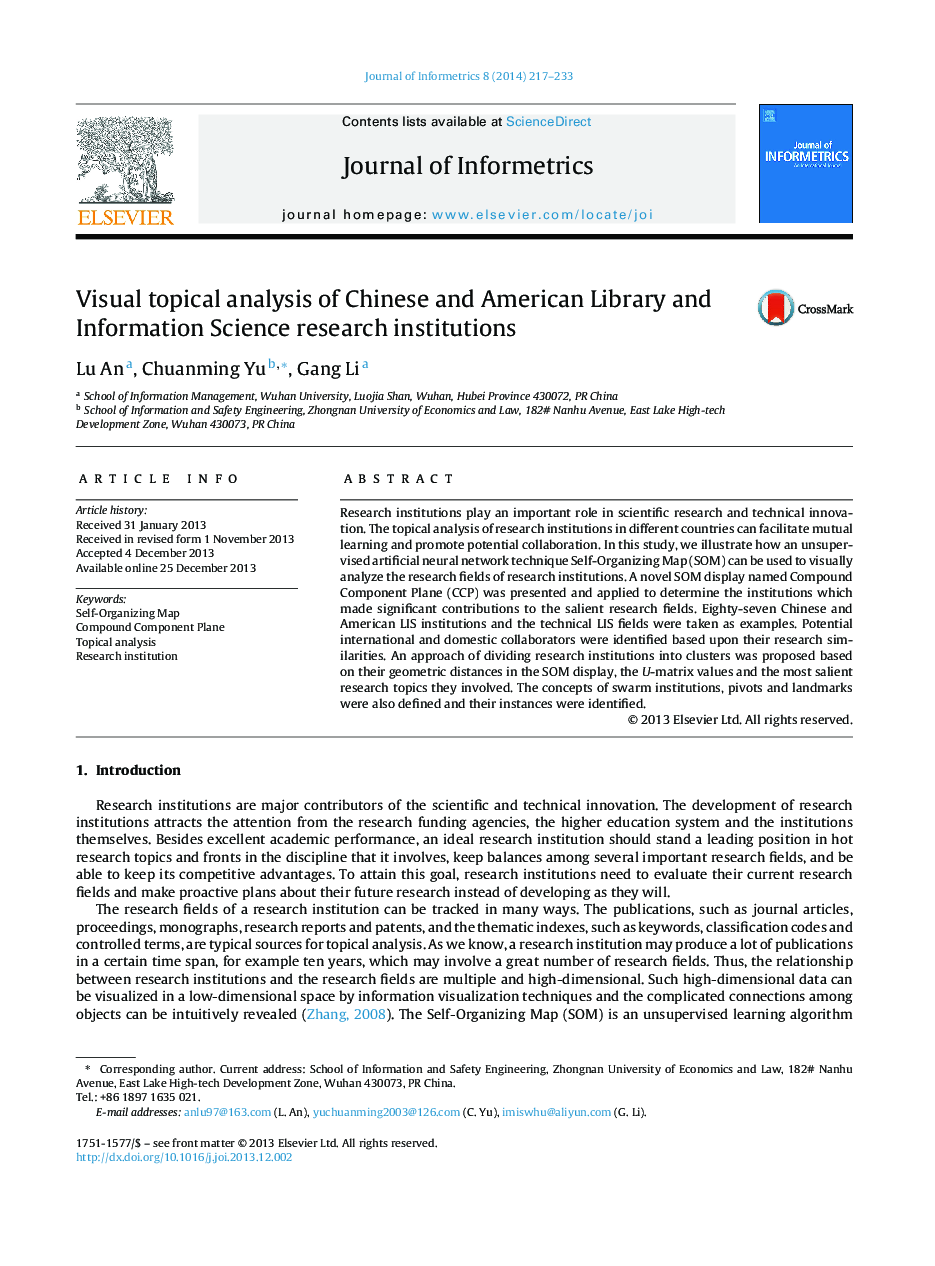| Article ID | Journal | Published Year | Pages | File Type |
|---|---|---|---|---|
| 523975 | Journal of Informetrics | 2014 | 17 Pages |
•We illustrate how to use the SOM to analyze the research fields of institutions.•A novel SOM display named Compound Component Plane (CCP) was presented and applied.•87 Chinese/American LIS institutions and the technical fields were studied.•Potential international and domestic collaborators were identified.•The swarm institutions, pivots and landmarks were defined and identified.
Research institutions play an important role in scientific research and technical innovation. The topical analysis of research institutions in different countries can facilitate mutual learning and promote potential collaboration. In this study, we illustrate how an unsupervised artificial neural network technique Self-Organizing Map (SOM) can be used to visually analyze the research fields of research institutions. A novel SOM display named Compound Component Plane (CCP) was presented and applied to determine the institutions which made significant contributions to the salient research fields. Eighty-seven Chinese and American LIS institutions and the technical LIS fields were taken as examples. Potential international and domestic collaborators were identified based upon their research similarities. An approach of dividing research institutions into clusters was proposed based on their geometric distances in the SOM display, the U-matrix values and the most salient research topics they involved. The concepts of swarm institutions, pivots and landmarks were also defined and their instances were identified.
